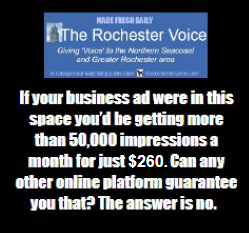With fast food prices rising by an average of 47% over the past decade, the personal-finance website WalletHub today released its report on the States Where People Spend the Most and Least on Fast Food to shed light on where these purchases put the biggest strain on Americans' wallets.
To determine where consumers spend the most and least relative to their earnings, WalletHub analyzed the average prices of burgers, pizza and fried chicken sandwiches in each of 50 states, then compared them to the median household income.
| Highest % of Income Spent | Lowest % of Income Spent | |
| 1. Mississippi (0.4740%) | 41. Washington (0.3279%) | |
| 2. New Mexico (0.4682%) | 42. Colorado (0.3197%) | |
| 3. Kentucky (0.4585%) | 43. Virginia (0.3144%) | |
| 4. Arkansas (0.4533%) | 44. Maryland (0.3121%) | |
| 5. West Virginia (0.4412%) | 45. Minnesota (0.3098%) | |
| 6. Louisiana (0.4384%) | 46. New Hampshire (0.3028%) | |
| 7. Alabama (0.4316%) | 47. Utah (0.3024%) | |
| 8. Montana (0.4297%) | 48. Connecticut (0.2997%) | |
| 9. Oklahoma (0.4226%) | 49. New Jersey (0.2948%) | |
| 10. Vermont (0.4209%) | 50. Massachusetts (0.2896%) | |
To view the full report and your state's rank, please visit:
https://wallethub.com/edu/states-where-people-spend-the-most-least-on-fast-food/146260
Key takeaways and WalletHub commentary are included below in text and video format. Feel free to use the provided content as is or edit the raw files as you see fit.
Please let me know if you have any questions or if you would like to arrange a phone, video or in-studio interview with one of WalletHub's experts.
 "With fast food prices rising by an average of 47% over the past decade, it's fair for consumers to wonder whether the convenience of having food in minutes is really even worth it anymore. Where you live can have a big impact on how much you shell out for fast food, too; it costs around 1.6 times more in the most expensive states than the cheapest states, relative to the median income."
"With fast food prices rising by an average of 47% over the past decade, it's fair for consumers to wonder whether the convenience of having food in minutes is really even worth it anymore. Where you live can have a big impact on how much you shell out for fast food, too; it costs around 1.6 times more in the most expensive states than the cheapest states, relative to the median income."
-
"Mississippians pay more for fast food relative to their income than anyone else in the country. Buying just one fast-food burger, a small pizza, and a fried chicken sandwich costs residents 0.47% of the median monthly household income. For comparison, the same purchases would only cost 0.29% of the median monthly household income in Massachusetts."
- Chip Lupo, WalletHub Analyst
Expert Commentary
What tips do you have to help people avoid overspending on fast food?
"Fast food isn't always the cheap, easy option it used to be. If you're looking to cut back, one of the best things you can do is plan your meals ahead or cook at home when you can. The truth is grabbing fast food now and then is something we can't always avoid. Setting a monthly budget for eating out can help you stay on track. Using restaurant apps may allow you access to deals, discounts and rewards. Ordering ahead through the apps can also help you skip impulse buys at the counter. Sticking to value meals, smaller portions, and skipping extras like drinks or desserts can help. Try treating fast food as an occasional indulgence rather than a go-to option. And finally, keep an eye on how much you're spending. It's easier to make smarter choices when you know where you are spending your money."
Douglas Mikutel, Ph.D - Professor, St. Johns River State College
"Pay your bills first. It is important to prioritize your income. Focusing on bills first will show how much is left for spending on food and entertainment. Also, pay with cash rather than credit when possible. A fixed amount of cash allocated for fast food consumption will keep spending within your established amount. It is often much less expensive to eat at home from purchased groceries and/or prepared meals. Meal planning and preparation at the start of the week will help make the most of household groceries and reduce potential food waste. This can include home-prepared meals and packed food for work or on-the-go. Lastly, consider choosing 1-2 days a week that you try to employ a 'spending diet' where you do not spend money if possible. Fewer days of eating fast food should lead to less spending on fast food."
Jennifer Logan, PhD - CEER Director; Professor, Southern Arkansas University
How important is budgeting when it comes to spending money on fast food?
"Budgeting is very important in this case. Look over previous monthly expenditures and consider fast food consumption patterns, observing peak consumption days/times and consider alternatives such as preparing meals at home. Review and revise your monthly budget as there are changes to your finances. In some cases, the envelope method can be employed here to stay within your budget. According to this method, buyers place portions of their income in various envelopes for expenses such as food, rent, and utilities. If possible, select 1-2 days in which you can avoid spending money, forcing more household eating opportunities. Additionally, consider utilizing restaurant deals and reward programs as a healthier option to eat food at comparable prices."
Jennifer Logan, PhD - CEER Director; Professor, Southern Arkansas University
How is the current social and economic environment influencing household spending on fast food?
"People are bombarded with advertisements for various fast food options throughout the day. Individuals with hectic schedules may find it a challenge to avoid overspending in return for the convenience of fast food. Commercials promise value to families with filling food options and a short wait in line. To increase convenience further, many fast food providers offer pick-up service through their company apps, reducing wait times further. At the same time, prepare-at-home meals using fresh shipped ingredients have seen a surge in demand over the past few years. Websites such as hungryroot.com and hellofresh.com offer these services, providing healthier choices to buyers. The added convenience and meal prepping opportunity this provides can help buyers to reduce spending on fast food and include healthier options in the weekly diet."
Jennifer Logan, PhD - CEER Director; Professor, Southern Arkansas University
Tips for Saving Money on Fast Food
- Use coupons. Although fast food menu prices have risen substantially in recent years, you can get discounts that are comparable to the old prices by using coupons. The easiest way to get coupons is by installing the fast food chain's app, but you may also be able to find other coupons online or in the mail.
- Budget wisely. If treating yourself to fast food is something that you value, it's essential to know how to budget well. That way, you'll have a good idea of how much you can afford to spend, and thus avoid overspending. When you create your budget, consider adding fast food last with your "wants." Cutting out other luxuries and growing your savings can also make eating out more often possible.
- Don't get delivery. It's a pain to drive to a fast food joint to pick up your food. However, getting food delivered will make your food cost far more than it would if you picked it up yourself, between regular delivery costs, convenience fees and tips.
- Eat out less often. Often the best way to save money is simply not to spend it in the first place. Eating fast food even slightly less often can save you a considerable amount of money. Cooking for yourself may be a little more time consuming, but it'll probably be a lot cheaper too.
- Join rewards programs. Some fast food chains have rewards programs that will give you free food when you've spent a certain amount of money or made a certain number of orders.
- Don't go crazy with your orders. Adding extra toppings, sides or desserts, or getting the largest sizes of everything, can make your meal get really expensive quickly. Since fast food meals are usually high-calorie to begin with, avoiding too many extras is also good for your health.













